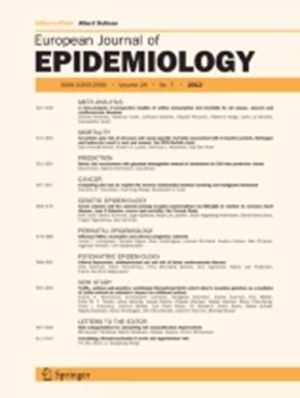复杂数据的复杂方法:暴露研究中可解释和可操作结果的关键考虑因素。
IF 5.9
1区 医学
Q1 PUBLIC, ENVIRONMENTAL & OCCUPATIONAL HEALTH
引用次数: 0
摘要
复杂的多维数据正变得越来越广泛,并极大地影响着流行病学研究的设计和开展方式。诸如暴露量等新框架——包括影响个人一生的全面和累积的一系列暴露以及影响个人行为的复杂机制——提供了一个独特的机会,可以改变在人群和个人层面确定公共卫生建议的方式。伴随着这场数据革命,人们对能够处理这些新颖研究问题的复杂性的分析方法越来越感兴趣。其中包括半参数和非参数统计以及机器学习方法,这些方法为分析大规模数据库提供了引人注目的框架,同时减少了过拟合。然而,从这些复杂的方法中解释结果往往具有挑战性。虽然关于可解释性的讨论主要集中在统计推断上,但因果考虑和研究结果在为有形干预措施设计提供信息方面的实际适用性受到的关注较少,尽管它们是流行病学研究的重要组成部分。在这篇评论中,我们对这三个层次的可解释性——统计、因果和可操作性——进行了总体概述,并讨论了可用的工具,这些工具可以帮助流行病学家在开始使用更复杂的分析方法时提高结果的可解释性。本文章由计算机程序翻译,如有差异,请以英文原文为准。
Complex methods for complex data: key considerations for interpretable and actionable results in exposome research.
Complex multidimensional data are becoming more widely available and are drastically affecting the way epidemiological studies are designed and conducted. Novel frameworks such as the exposome-which encompasses the comprehensive and cumulative set of exposures affecting individuals throughout their lifetime and the complex mechanisms through which they act - provide a unique opportunity to transform how public health recommendations are identified at the population and individual level. This data revolution is accompanied by a growing interest in analytical approaches that can handle the complexity of these novel research questions. These include semi-parametric and non-parametric statistical and machine learning methodologies that provide compelling frameworks for analyzing large-scale databases while mitigating overfitting. Nevertheless, interpreting results from these complex methods is often challenging. While discussions on interpretability have largely focused on statistical inference, causal considerations and the practical applicability of the findings to inform the design of tangible interventions have received less attention-despite being essential components of epidemiological research. With this commentary we provide a general overview of these three levels of interpretability-statistical, causal, and actionable-and discuss available tools that can aid epidemiologists to improve results interpretability as they start utilizing more complex analytical approaches.
求助全文
通过发布文献求助,成功后即可免费获取论文全文。
去求助
来源期刊

European Journal of Epidemiology
医学-公共卫生、环境卫生与职业卫生
CiteScore
21.40
自引率
1.50%
发文量
109
审稿时长
6-12 weeks
期刊介绍:
The European Journal of Epidemiology, established in 1985, is a peer-reviewed publication that provides a platform for discussions on epidemiology in its broadest sense. It covers various aspects of epidemiologic research and statistical methods. The journal facilitates communication between researchers, educators, and practitioners in epidemiology, including those in clinical and community medicine. Contributions from diverse fields such as public health, preventive medicine, clinical medicine, health economics, and computational biology and data science, in relation to health and disease, are encouraged. While accepting submissions from all over the world, the journal particularly emphasizes European topics relevant to epidemiology. The published articles consist of empirical research findings, developments in methodology, and opinion pieces.
 求助内容:
求助内容: 应助结果提醒方式:
应助结果提醒方式:


